Do you have a piece of ironware with a word on the base that reads Marion? Then, you have an antique piece of cast iron cookware from the Marion Stove Company.
Unfortunately, there is little written about the company. However, some skillets and kettles have hidden markings called ghost marks. And we can use these markings to help estimate the age and date of your ironware. The handle and heat ring are other signs of a possible date of manufacture.
Table Of Contents
- Company Information
- Logo Placement
- Is Marion Cast Iron Any Good?
- Estimated the Date of Manufacture
Identify Your Antique Marion Cast Iron And Estimate The Age Of Your Cookware
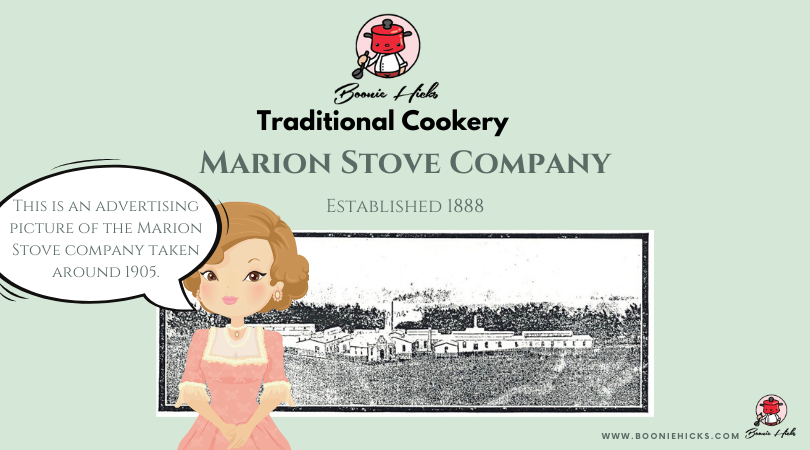
Marion Stove Company information
Founders | F.J Gould and E.P Fruhey |
Operational Dates | The company started production in 1888. The 12th of October 1929 is the company’s last published public record. |
Located | Marion, Indiana |
Product line | Stoves, furnaces, cookware |
Company specialization | The company focused on high-end heating stoves. |
Marion brands | Retort Oak, Marion Oak, Marion |
Reason for Closure | When and why Marion closed the ironworks is unknown. However, competition, technological change, labor, and economic disruptions were likely major contributing factors. |
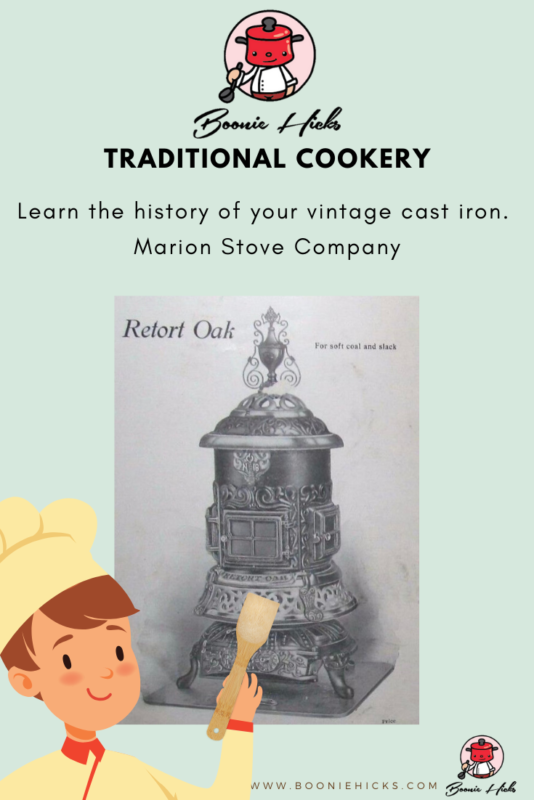
Position Of The Marion Logo
Let’s start with the logo placement. If you have a Marion skillet, check the position of the logo. The logo will be in one of three places: slightly above the center, center, or below the center. I’m unaware of the reason why there are different logo placements. And if the location affects the date of manufacture.
See the pictures below for examples.
Logo Above Center
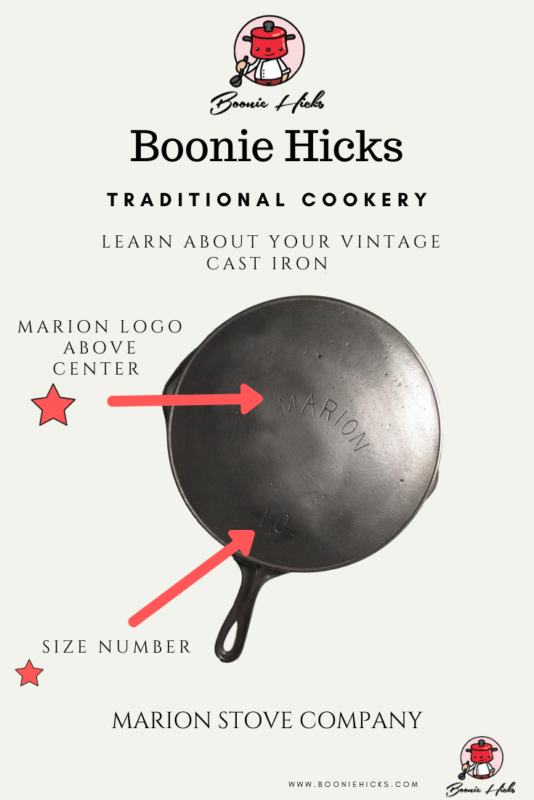
Logo In The Center
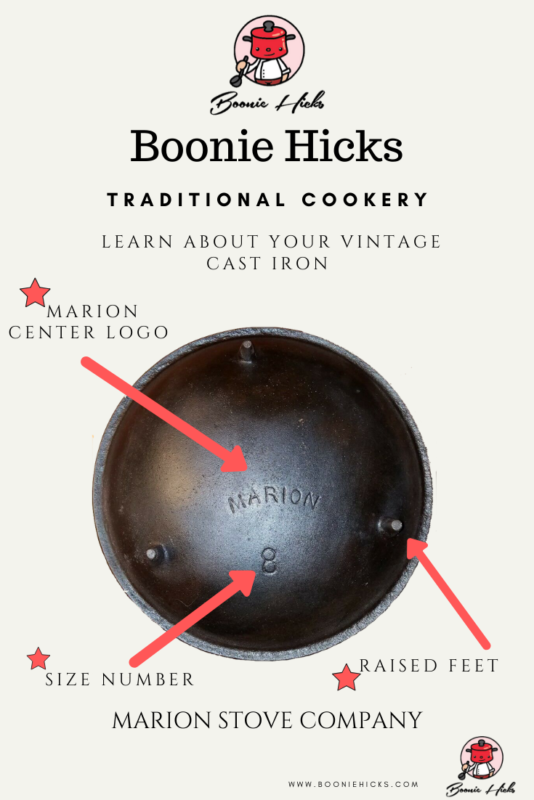
Below Center Logo
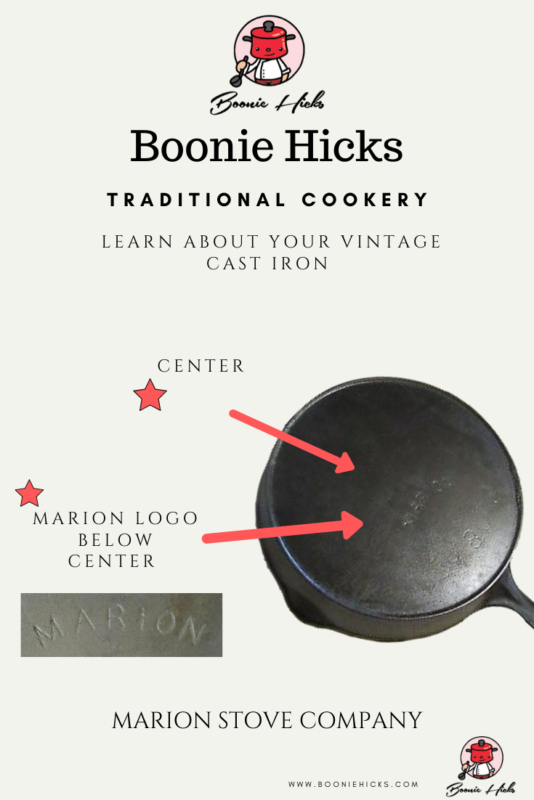
Is Marion Cast Iron Any Good?
Griswold and Wagner ironware receives much attention from those interested in cast iron. And this is not without a good reason: the cookware from the two companies is brilliant. However, many 19th and early 20th century foundries produced high-quality hollowware, equal to Wagner and Griswold.
Cast iron from Marion Stove Company is one of these companies. The cookware tends to be lightweight and smooth. And if you have a piece of cookware from Marion, that’s a bonus as they are hard to find if you want one.
Erie Ghost Marks
It looks like the boys at Marion Stove Company used Erie skillets as molds or templates to make their ironware. And it’s not uncommon to see Erie ghost marks on Marion skillets. For me, it adds to the character of the ironware and makes the vintage cast iron fun to collect.
Using another company’s product as a template is dishonest in this day and age. But interestingly, Marion was not alone. And you’ll likely see Erie ghost markings on other foundry cookware such as Sidney Hollow Ware and Columbus Hollow Ware Company skillets. They also look very similar to Erie skillets.
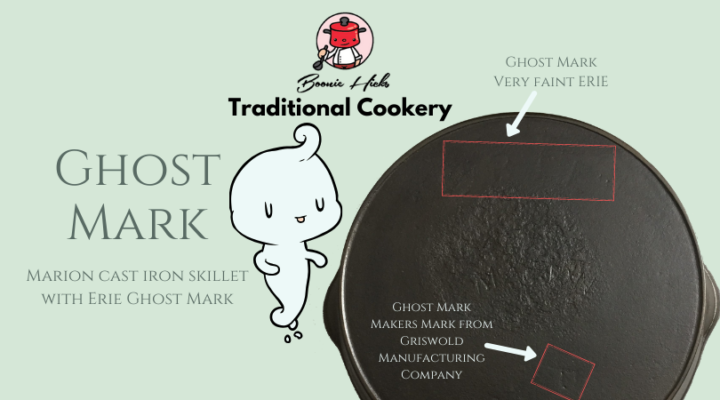
Identify And Date Your Antique Marion Cast Iron.
Determining the date of Marion cast iron cookware is difficult. Unfortunately, little information is available, and the company seems focused on producing heating stoves, ranges, and furnaces.
There Are Also A Few Variations And Changes In The Design Of The Cookware.
From what I can tell, the company started the production of cookware around 1888. However, when they ceased manufacturing is unclear. On the 12th of October 1929, trademarks of Marion Stove Works were re-registered. But I’m unsure if this was to apply for a new patent. Or to possibly transfer ownership of the patterns to a successor.
This date is less than two weeks before the Great Depression. And I suspect production of stoves and furnaces did not resume after this date.
Marion Cast Iron Was Likely Circa 1888 To The Early 1900s.
Although using the 1900s indicates before the 1910s, it also covers the entire century. However, unless otherwise informed, I’d say most Marion cast-iron hollowware is circa 1888-1910. Any later than this date, I’d like to see changes in the design of the cookware, such as the trend in the early 1900s of using inserted heat rings instead of outside heat rings.
- I’ve seen sellers list Marion cast circa 1888-the 1900s. And I tend to agree for the following reasons.
- Marion’s cookware looks similar to early Erie and Wagner’s cookware.
- Erie ghost marks are present on some cookware.
- Foundry burning down limiting resources for hollowware expansion.
- Industrial actions in the early 1900s resulted in work stoppages across the U.S.
- The company focuses on stove and furnace manufacturing.
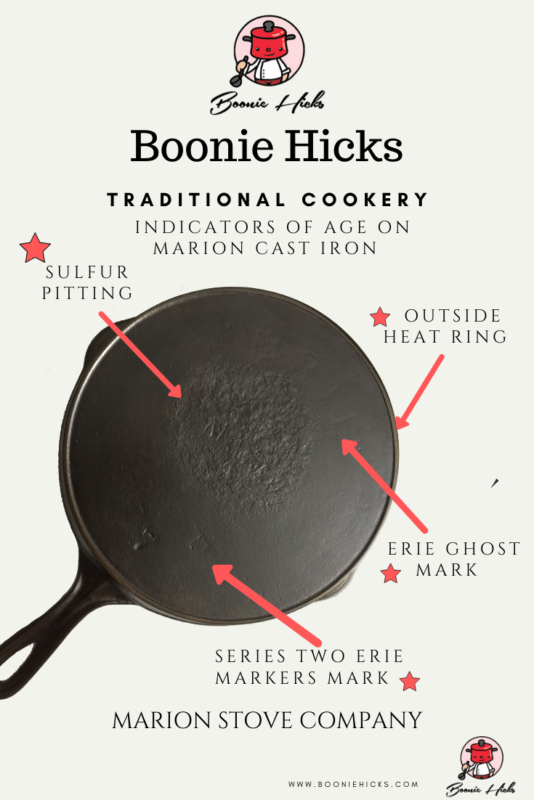
Final Thoughts
I hope you’ve enjoyed the article and have fun cooking up a storm in your Marion. To learn more about vintage cast iron, you might want to check out the articles below.
Hold on and treasure your Marion cast iron if you can. The Marion Stove Company manufactured hollowware in smaller quantities than other manufacturers, such as Wagner and Griswold. Pieces are also getting hard to come by. It’s hard to place an estimate on the date of manufacture. However, since the ironware looks similar to the early Wanger and Erie pans of the 1890s, Marion cast iron was likely manufactured around the 1890s-1900s.


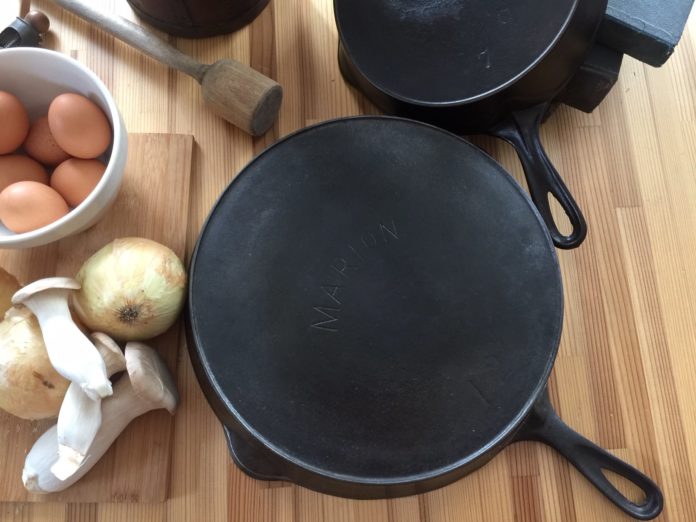
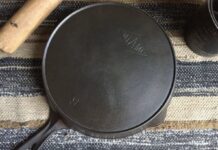
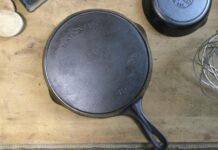
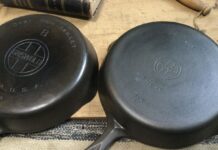



Hi! I have a Marion scotch pot #2 with what may be a gate mark on it. I would love to know it’s value. It’s in really decent shape.
Hi Debi
It’s great you have an old Marion Scotch bowl. It’s something that most enthusiasts won’t have in their collection.
Unfortunately Scotch bowls don’t command high prices. I recommend checking out the sold listing on eBay for current selling prices. You’ll unlikely to find a Marion, but it should give you an indication on the value of antique Scotch bowls.
Personally, I’d hold on to it. After all they rarely come up for sale.
Cheers, have a great week.
Hi there! I purchased a cast iron skillet at a thrift store. It is 8″. On the back, it has the initials SK on top. In the middle on the back, it says “Made in USA”. On the bottom, it has “D1”. Can you tell me anything about this piece? Thank you very much.
Hi Fae
It sounds like you have an old vintage Lodge made in or after the 1960s. The SK stands for skillet, and it’s a good identifying mark for collectors to quickly recognize Lodge pans. Well done on your purchase
Have fun.